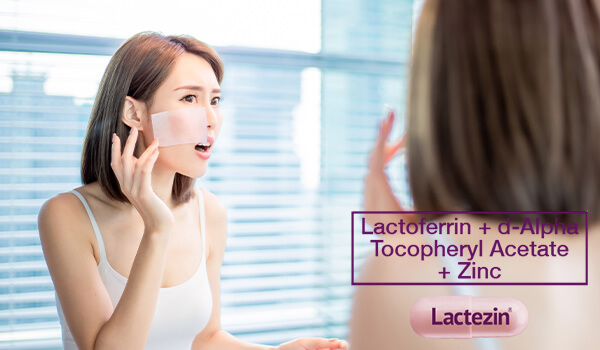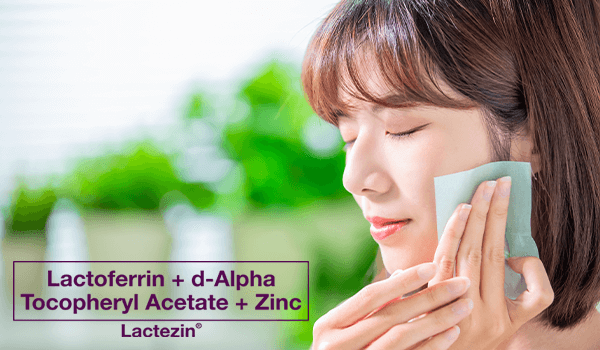The Science of Sebum on Skin and How it Leads to Acne

Too much sebum triggers acne – this is a phrase that you’ll often read in most skincare articles about oily skin and acne. But what is sebum? Is it something that the skin needs? Or does it plainly cause skin troubles? Read on to learn about sebum, what factors influence its production, how it can lead to acne and more.
What is Sebum and What are its Benefits for the Skin
Sebum is often regarded as the body’s natural oils found on the skin. It is secreted by the skin’s sebaceous glands which are small and tucked in the inner layers (dermis) of the skin. A sticky, oily and waxy substance, sebum is made up of fatty acids, sugars, waxes and other natural chemicals that help minimize water evaporation. That said, this component’s primary function is to protect the skin and hair from moisture loss. While research is still ongoing, it is thought that many of the components of sebum support skin health in various ways:
- The lipids in sebum help lock in moisture, promoting skin hydration and flexibility.
- Sebum helps prevent oxidative damage on the skin thanks to its role in the transport of fat-soluble antioxidants (such as Vitamin E) to the skin’s surface.
- Slightly acidic with a pH of between 4.5 and 6.0, sebum helps keep harmful pathogens (such as bacteria, fungi and viruses) out and away from penetrating the skin.
It’s important to know that while sebum is a core component, the oil on the skin’s surface is more than just sebum. It’s a mixture of sweat, skin cells and other tiny particles. If you have oily skin, there may be too much sebum on your skin.
Acne: Where Too Much Sebum Is Bad
Compared to normal, combination and dry skin types, the oily skin type rarely looks dull and is known to age slower! There is, however, the more known unpleasant side effect of acne.
An overproduction of sebum can lead to oily skin or when the skin appears greasy with enlarged pores. And when skin is oily, the occurrence of acne is not too far off. This is because excess sebum and oil can combine with dead skin cells and debris, forming tiny plugs that may trap dirt and bacteria in the pores. Trapped dirt and bacteria can also lead to inflammation. This chain of events result in the appearance of blackheads, whiteheads and pimples.
Inversely, when there’s too little sebum, the skin can become dry, flaky and itchy. That’s why for skin to be at optimal health, it helps to keep sebum production balanced and in check.
Factors that Affect Sebum Production
Sebum production is a complex process that’s yet to be fully explored. But in studies done on the subject, there are a handful of factors observed to influence it. Some of these factors include the following.
Hormones
Hormones such as androgens and progesterone are being studied to stimulate sebum production.
Age
After you are born, the sebaceous glands start producing as much sebum as an adult’s for the first three to six months of life. Then, it slows until puberty when production may increase up to 500%. After peaking at puberty, sebum production starts to decline.
Genetics
Skin types or the way your skin behaves can be inherited. If your parents have oily skin, it is very likely that you have overactive sebaceous glands too.
Climate
The conditions of where you live and what the usual weather is can influence sebum production too. Skin can become oilier in hot and humid environments.
Taking Control of Sebum, Oil & Acne
There is little to nothing you can do about genes, hormones and the weather. But the good news is that there are ways to keep oil and sebum in check, and prevent acne. Here are what experts recommend:
- Wash your face in the morning, evening and after every exercise
- Avoid touching your face throughout the day
- Stick to gentle products as hash-formulated ones may dry and irritate your skin
- Moisturize regularly with light, non-comedogenic products
- Use chemical exfoliants instead of the traditional gritty scrubs
- Switch to oil-free, water based makeup
- Keep blotting sheets on hand and ready to wipe off excess oil
- Practice wearing sunscreen daily
For additional, expert action on acne, consider eating healthier, doing regular physical exercise and taking anti-acne oral medication. Oil is one of five common causes of skin problems that can be targeted from within the body. The Pimple Expert, Lactoferrin + d-Alpha Tocopheryl Acetate + Zinc (Lactezin) has Lactoferrin to help fight bacteria and inflammation, Vitamin E to help combat free radicals and dryness, and Zinc to help regulate oil.
Available in leading drugstores, supermarkets and online shops Shopee and Lazada, take Lactoferrin + d-Alpha Tocopheryl Acetate + Zinc (Lactezin) twice daily for at least two weeks with proper diet and exercise.
If symptoms persist, consult your doctor.
ASC REFERENCE NO. U198P063022LS
SOURCES:
https://www.healthline.com/health/beauty-skin-care/sebum
https://www.medicalnewstoday.com/articles/sebum#overproduction
https://www.medicalnewstoday.com/articles/321090#
https://www.britannica.com/science/sebaceous-gland
https://www.aad.org/public/everyday-care/skin-care-basics/dry/oily-skin
https://www.verywellhealth.com/acne-and-oily-skin-15964


